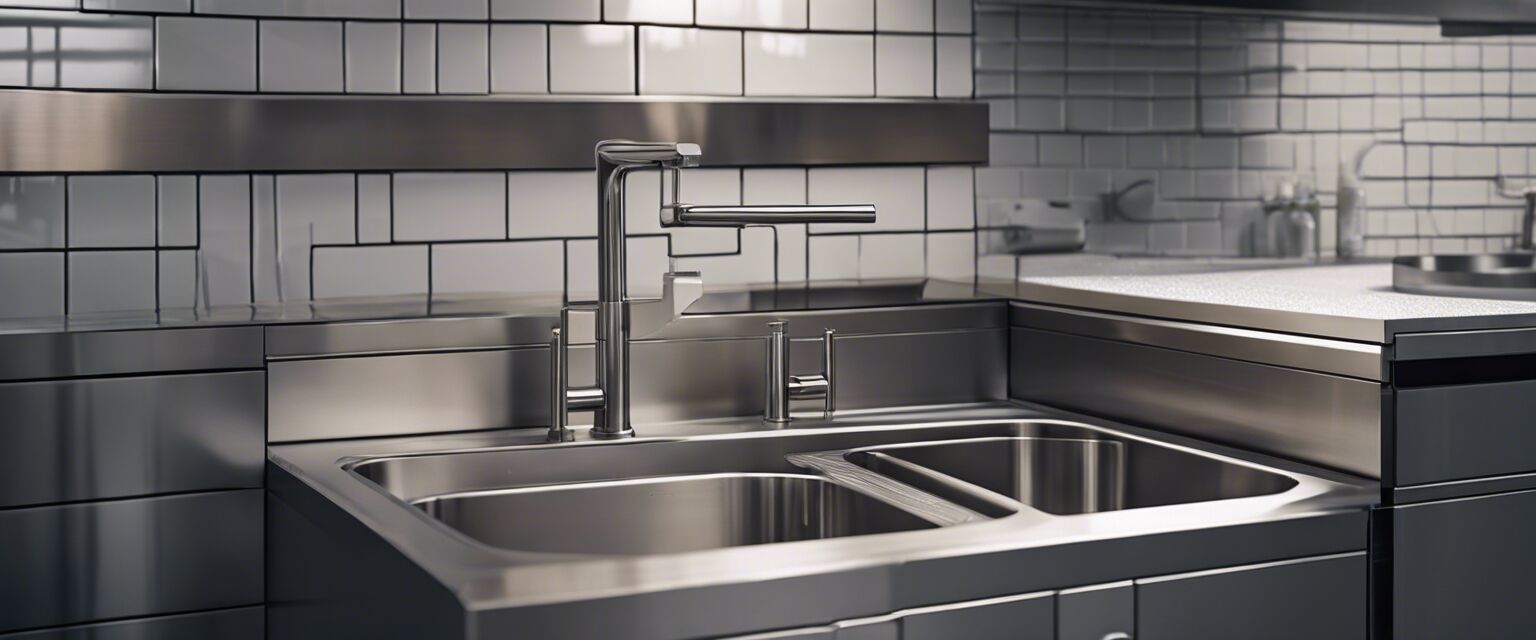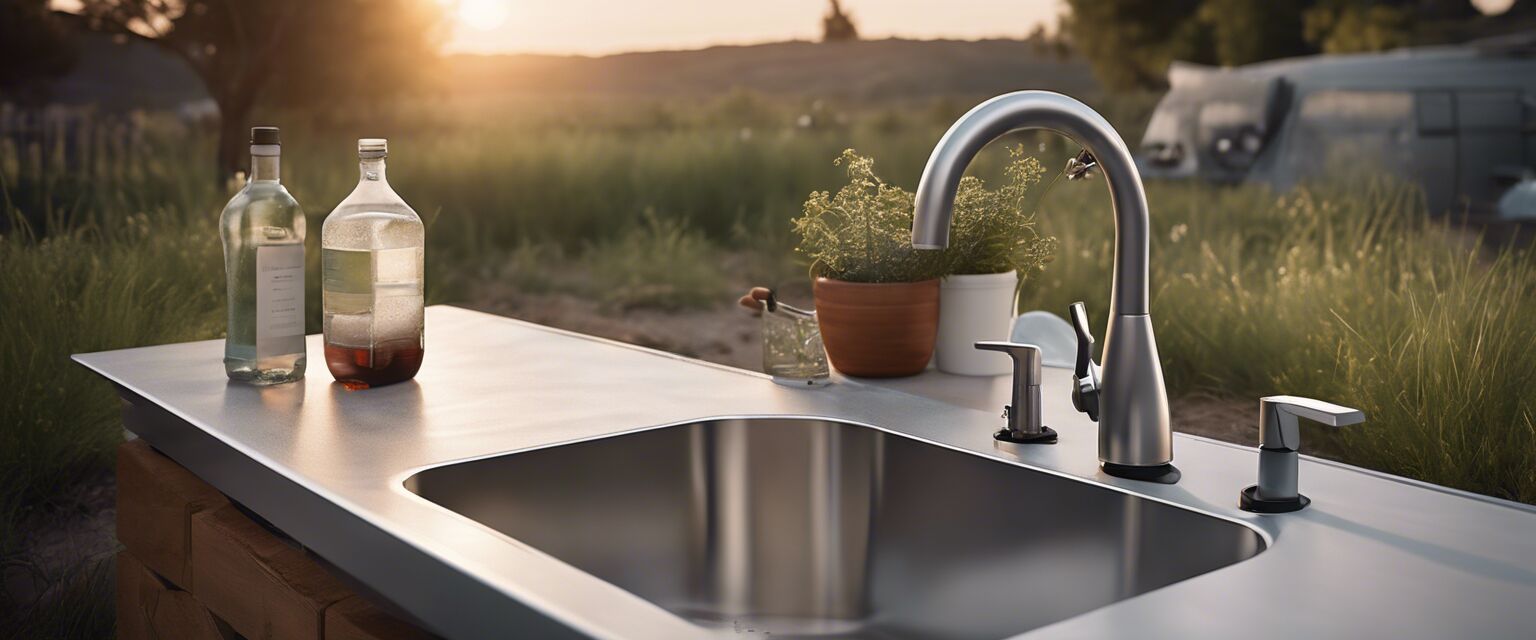
Undermount Sinks
Key Takeaways
- Undermount sinks are designed to be installed beneath the countertop, offering a seamless look.
- They are ideal for commercial kitchens due to their cleanliness and ease of maintenance.
- Available in various materials, including stainless steel and composite, to suit different aesthetic and functional needs.
- Proper installation is crucial for durability and functionality.
- Regular maintenance ensures the longevity of the sink and prevents buildup of grime.
Undermount sinks are a popular choice in industrial and commercial kitchens, thanks to their sleek aesthetic and practical benefits. They offer a clean look by being installed beneath the countertop, eliminating the need for a rim. This design not only enhances the overall appearance but also makes cleaning easier. In this guide, weâll explore the various aspects of undermount sinks, including their benefits, installation tips, and maintenance practices.
What Are Undermount Sinks?
Undermount sinks are sinks that are mounted below the countertop, creating a smooth, continuous flow between the countertop and the sink. They are commonly made from materials such as stainless steel, which is durable and easy to clean, or composite materials that offer different aesthetic options.
Advantages of Undermount Sinks
| Advantage | Description |
|---|---|
| Seamless Design | Provides a sleek look that enhances the overall kitchen design. |
| Easy Cleaning | Without a rim, food particles and spills can be wiped directly into the sink. |
| More Counter Space | Allows for more usable counter space since there is no lip around the sink. |
| Durability | Often made from strong materials that withstand heavy use in commercial settings. |
| Variety of Styles | Available in various shapes and materials to match any kitchen decor. |
Installation Tips for Undermount Sinks
Proper installation is key to ensuring the functionality and longevity of undermount sinks. Here are some essential tips:
- Ensure the countertops are installed before placing the sink.
- Use a high-quality adhesive sealant to secure the sink to the countertop.
- Consider the weight of the sink; heavier sinks may require additional support.
- Ensure proper plumbing connections for drainage and water supply.
- Test for leaks after installation to avoid future issues.

Maintenance of Undermount Sinks
Regular maintenance is essential to keep your undermount sink in top condition. Here are some maintenance tips:
- Clean regularly with a mild detergent and soft cloth to avoid scratching.
- Use a non-abrasive cleaner for tough stains.
- Inspect the sealant regularly and reapply if necessary to prevent leaks.
- Avoid placing heavy items directly in the sink to prevent damage.
- Rinse the sink after use to prevent buildup of grime and stains.
Common Materials for Undermount Sinks
| Material | Pros | Cons |
|---|---|---|
| Stainless Steel | Durable, easy to clean, and resistant to heat. | Can scratch or dent over time. |
| Composite | Available in various colors, resistant to stains and scratches. | May chip if heavy items are dropped. |
| Cast Iron | Very durable with a classic look, excellent heat retention. | Heavy and can require additional support. |
| Fireclay | Stylish and very durable, resistant to chipping. | Can be expensive and heavy. |
Choosing the Right Undermount Sink for Your Business
When selecting an undermount sink for your commercial kitchen, consider the following factors:
- Size: Ensure the sink fits within your kitchen layout and meets your space requirements.
- Material: Choose a material that suits your kitchenâs style and is durable for your needs.
- Depth: A deeper sink may be preferable for washing large pots and pans.
- Configuration: Consider whether a single or double sink fits your workflow better.
- Budget: Balance quality and cost to find the best option for your establishment.

Conclusion
Undermount sinks are an excellent investment for any commercial kitchen. Their seamless design, ease of cleaning, and variety of materials make them a practical choice. By understanding the benefits, installation requirements, and maintenance tips, you can ensure a long-lasting and functional addition to your kitchen space.
Tips for Beginners
- Start with a budget to narrow down your options.
- Consult with a professional for installation to ensure proper setup.
- Choose a sink that complements your kitchen's style and workflow.
- Regularly check for wear and tear to maintain functionality.
Pros
- Enhances kitchen aesthetics.
- Facilitates easy cleaning.
- Maximizes counter space.
- Durable and available in various styles.
Cons
- Installation can be complex.
- May require additional support for heavy materials.
- Potential for sealant wear over time.
For more information on different types of sinks, check out our pages on corner sinks, drop-in sinks, handwashing sinks, prep sinks, and stainless steel sinks.








